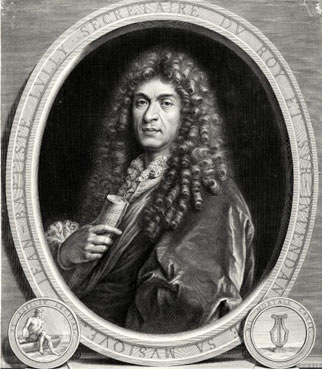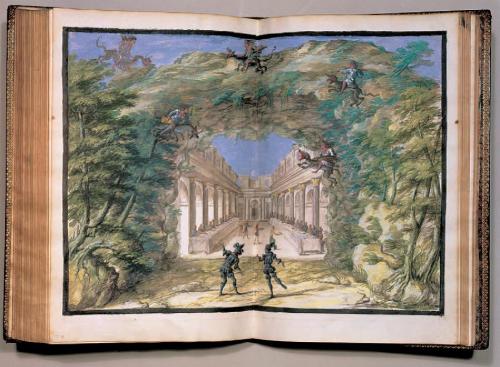In 1664 Louis XIV gave his first great fête at Versailles, a small hunting box built by his father and which the Roi Soleil was transforming into the astonishing château that would materially represent the political, economic, and artistic supremacy of France. Officially honoring Queen Marie-Thérèse and Queen Mother Anne d’Autriche, the entertainments were in fact dedicated to Louise de La Vallière, the king’s first maîtresse en titre.
Foremost among those who took part in the spectacle was the young warrior king himself, clad in jewel-encrusted gold and silver armor as the chevalier Roger, who, at the bidding of the sorceress Alcine, arrives with his retinue to entertain the queens over the course of several days in Les Plaisirs de l’Île Enchantée.
In 1668 Le Grand Divertissement Royal de Versailles, the most extravagant of the king’s fêtes, celebrated the glory of Louis XIV after the Treaty of Aix-la-Chapelle. The éclat of the brilliant and youthful court, entertained with fireworks, tournaments, dance, music, and theater, was heightened by collaborations between two of the greatest names in the dramatic arts: Lully and Molière.
Les plaisirs de l’Île enchantée (La Princesse d’Élide); George Dandin ou Le mari confondu (Le grand divertissemant royal de Versailles) (Hildesheim: G. Olms, 2004) is a new edition of the keyboard score for the comédies-ballets La princesse d’Élide (1664) and George Dandin (1668); it is part of Olms’s Œuvres complètes of Lully.
Above, the official commemorative engraving of Festin du roi et des reines from 1664; below, excerpts from Lully’s score for La princesse d’Élide.





